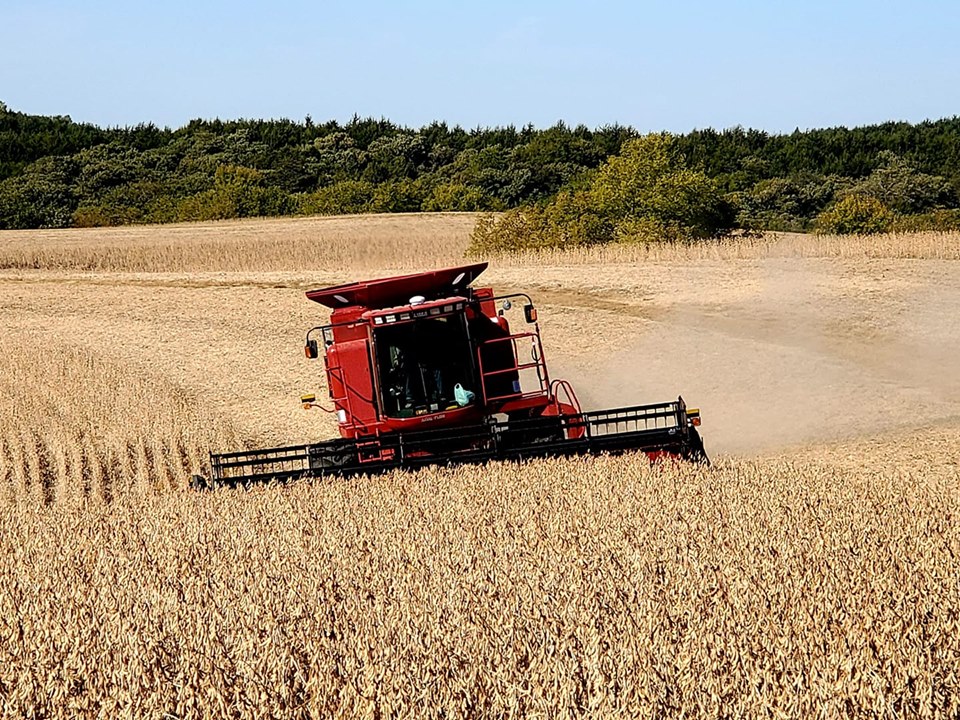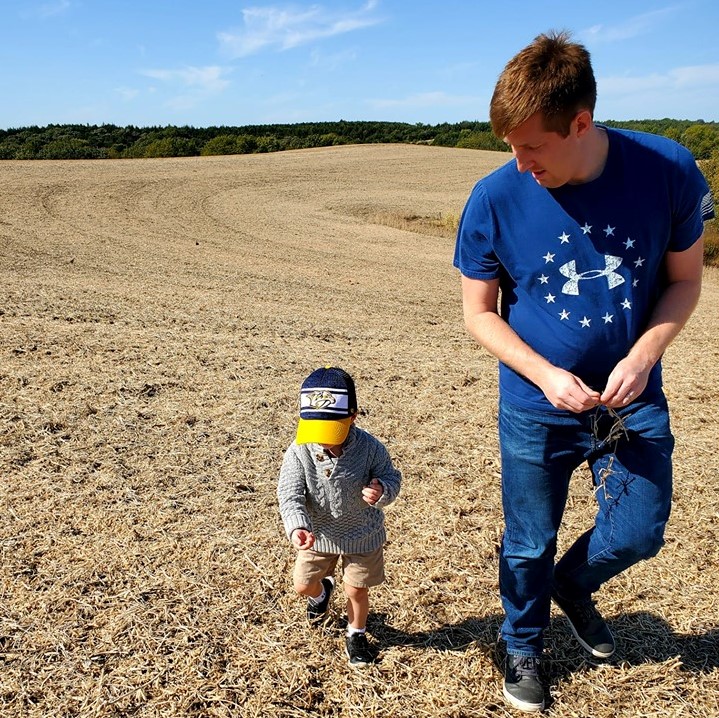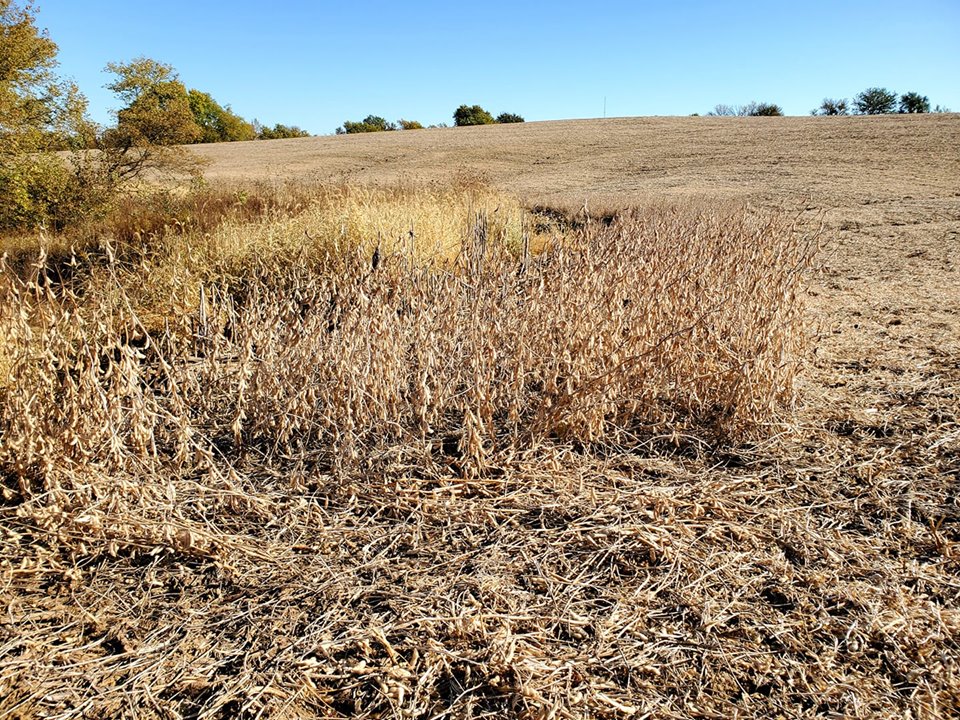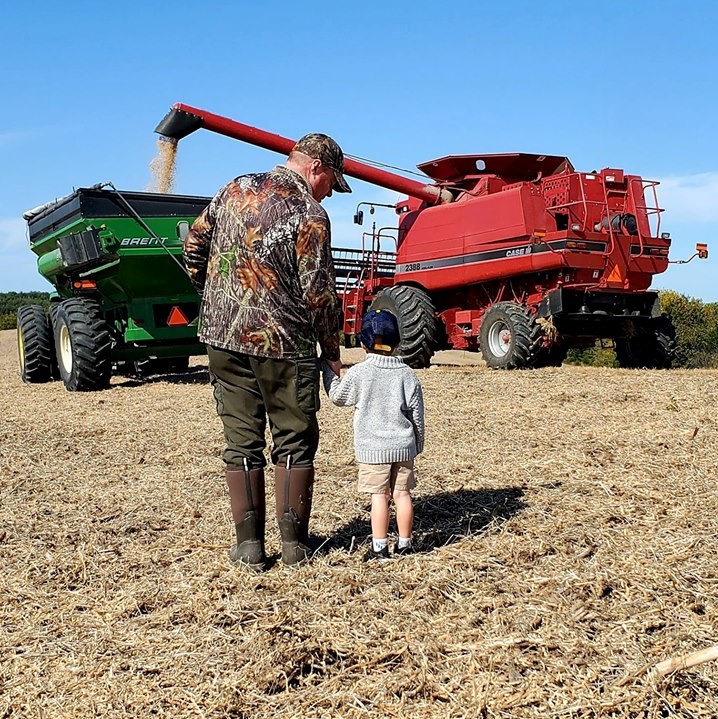Let’s face it. We are living in an era where people do not fully understand where their food originates. We are living in an era where urbanization is spreading like wildfire. We are living in an era where there is a decline in rural populations. Yes, we are living in an era where for the first time in history most of the world’s population lives in a city.
Enter agriculture (ag).
Enter youth.
Enter my nearly 4-year old grandson – Jackson Edward Wagner.
Recently, Jackson, my son-Zach (his dad), my wife-Polly (his grandma) and I ventured to the family farm to observe and engage in the annual fall soybean harvest with our farmer, producer friends. The intrigue and fun factor levels were high!

The purpose of the trip was for Jackson to comprehend where his food is derived plus experience the combines, tractors, grain carts, boll buggies and grain-hauling semi- trucks associated with the harvest.

Farm visits are important to challenge ignorance and misconceptions about farming at young ages. These visits are very important in a state such as Nebraska where 97 percent of the land is privately owned and agriculture is the top industry. The stops to chat with farmers challenge traditional stereotypes of agriculture and according to one farmer friend of mine, overcome the “get off my land” perception. Many of these rural folks also enjoy talking about outdoor activities like hunting and fishing.
Farmers almost everywhere are always glad to share the knowledge of their work with youth and others, especially during the harvest season. And, it is not difficult to find them in Nebraska driving rural county roads. You just need to be respectful with asking permission to safely witness the process and pick up a handful of beans or corn to show your kids. The key thing is not to halt the harvest operation.

Witnessing agriculture in action teaches kids to have a greater appreciation for food. Spending an hour or two or even the better part of a day on a farm during harvest will change the way you and your children see what you eat. Food becomes a treasured reward not just something that comes from a store in a pretty package. Studies show kids who can experience their foods firsthand are more likely to waste less and eat a greater variety of them.
Here is a quick video clip I took of a combine harvesting a soybean field on our southeast Nebraska farm.
As an outdoor educator, it has always fascinated me how many kids do not know where their food comes from or what their food really is. Milk, they repetitively tell me, is from a plastic container and bread, they repeatedly remark, is from a plastic bag. The kids consider vegetables as flavorless, odd-shaped mystery food items that they are forced to eat. Kids benefit knowing where their food is sourced and the interesting process of how food is brought from the farm to the table.

Agriculture provides most of the world’s food and fabrics but is inextricably linked to nature, too. Weather cycles, climatic changes and pollinators that impact wild plants, impact crops. Wildlife (deer, turkey, etc.) eat various wild-grown plants but also feed on some planted ag crops, leftover crop residue and any crops left in hard-to-harvest places next to cover.

The habitat edges of agricultural fields are also wonderful locations to view different kinds of birds and various other wildlife.
Hunting the habitat edges of agricultural fields that have corn, soybeans and other crops planted on them every year are no doubt great places to find lots of deer, turkey and other game.

Kids should also know local agricultural food production also consumes low amounts of energy and recycles carbon, nitrogen and other nutrients. The diversity of plants and even livestock on a farm is mutually sustainable, and farmers I know conserve and preserve soil and water as if their lives depend on it.
If you delve into history, you will find Native American Tribes such as the Pawnee in Nebraska relied on agriculture so strongly that other forms of subsistence such as hunting, gathering, foraging and fishing all flowed around the seasons for tribal women to plant and prepare the fields of corn, beans, squash and sunflowers for harvest.
This contact, with agriculture, such as it is today, between land and people is now close to nonexistent. Let’s reverse that trend!

The post Expose Your Kids To Agriculture appeared first on Nebraskaland Magazine.















